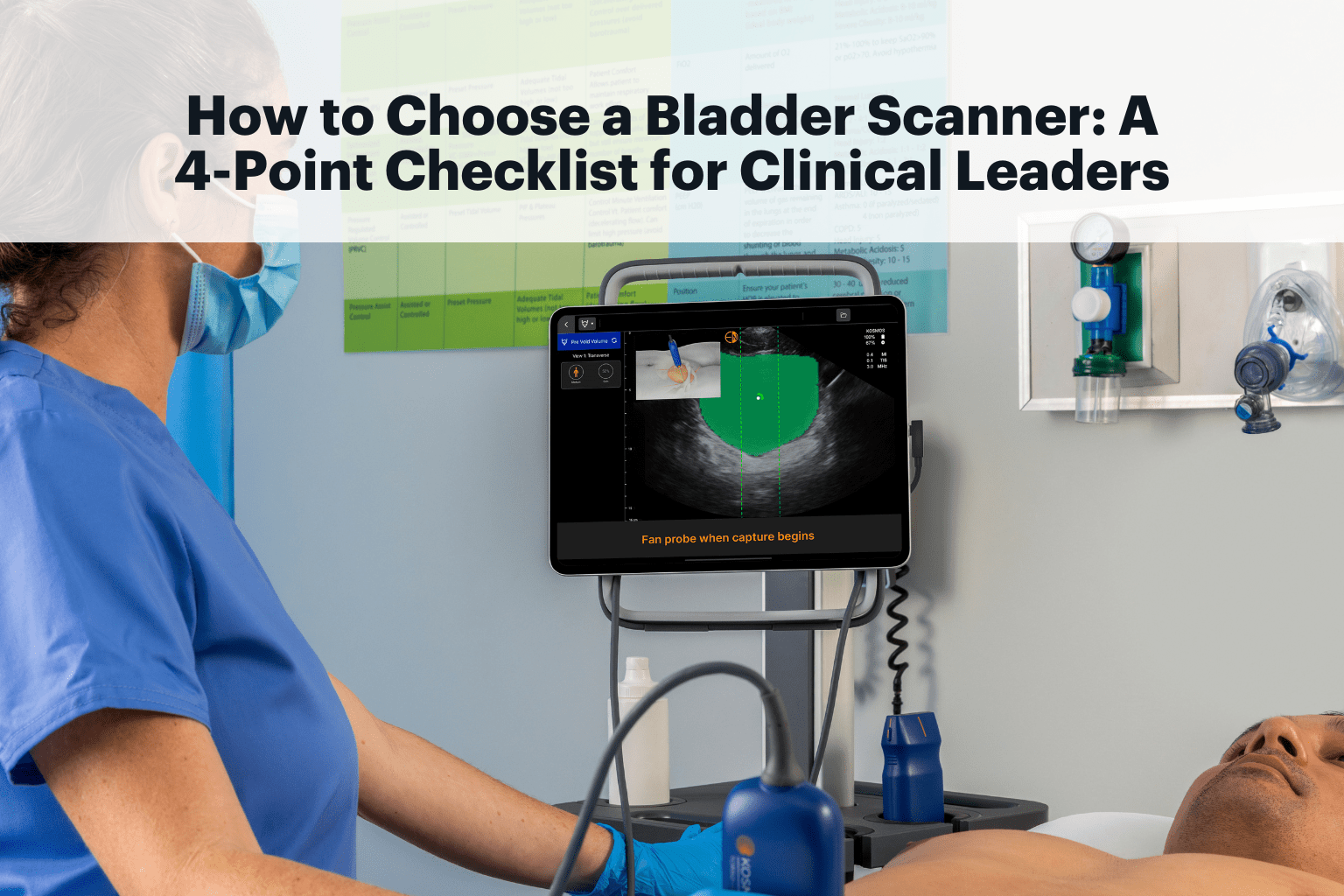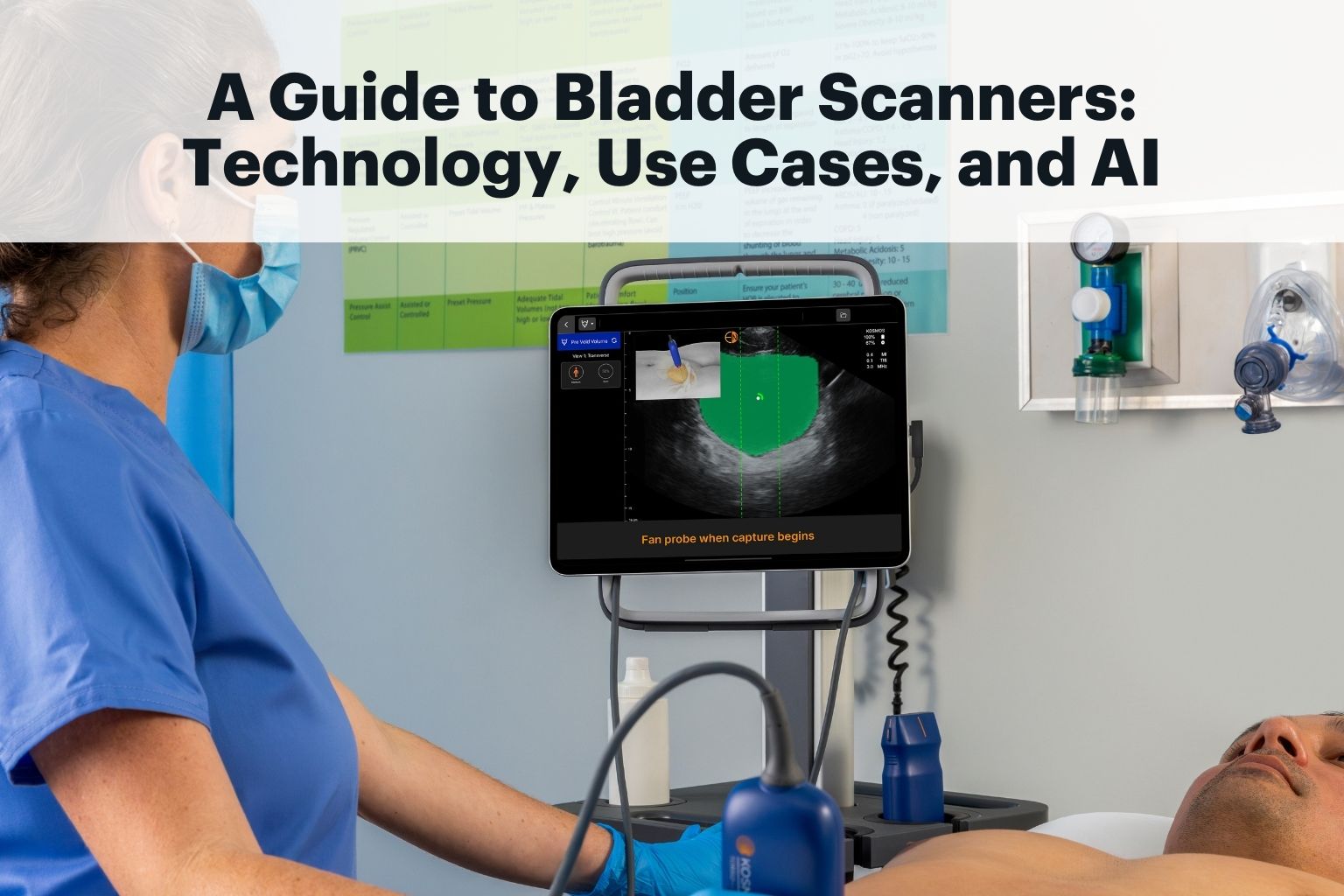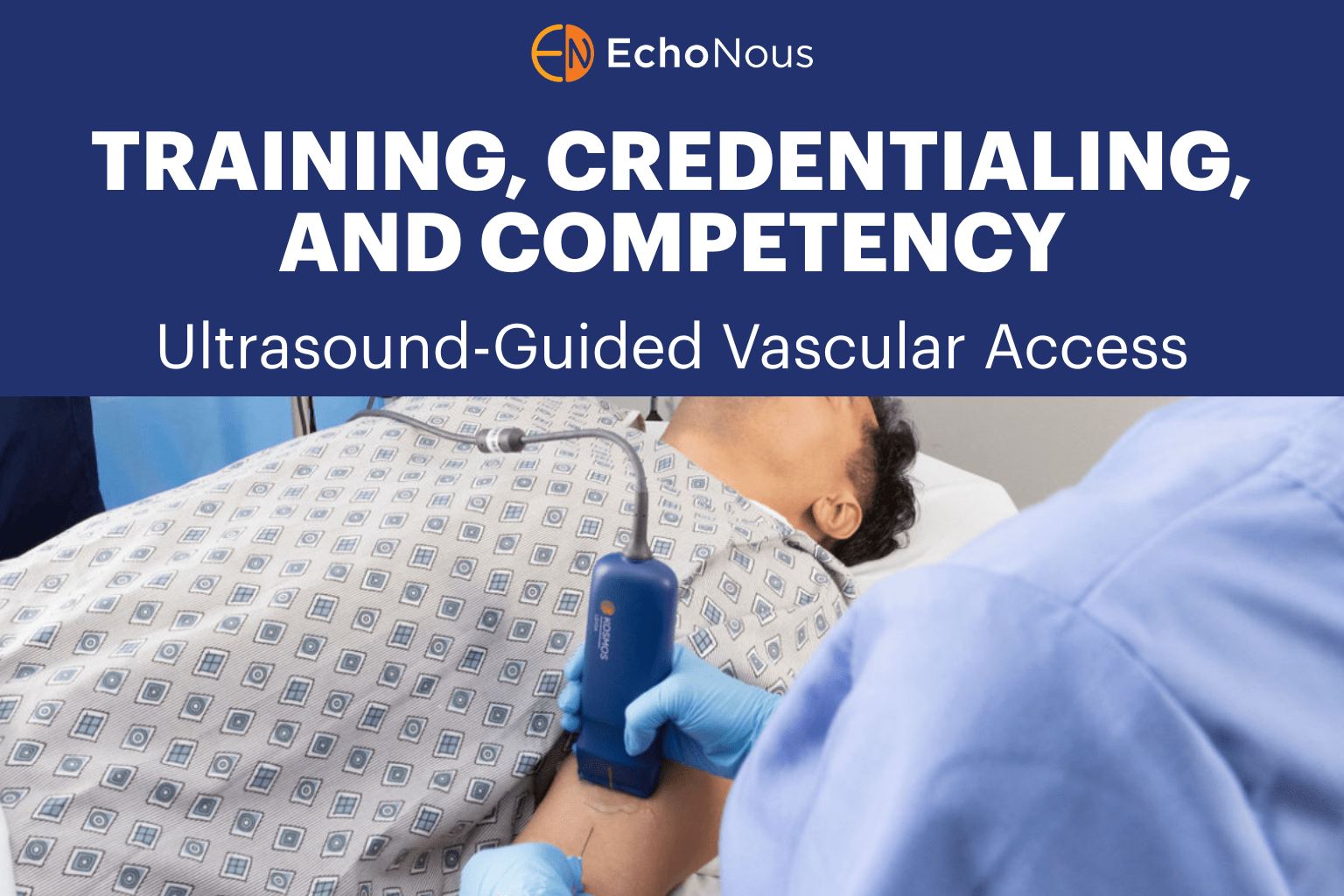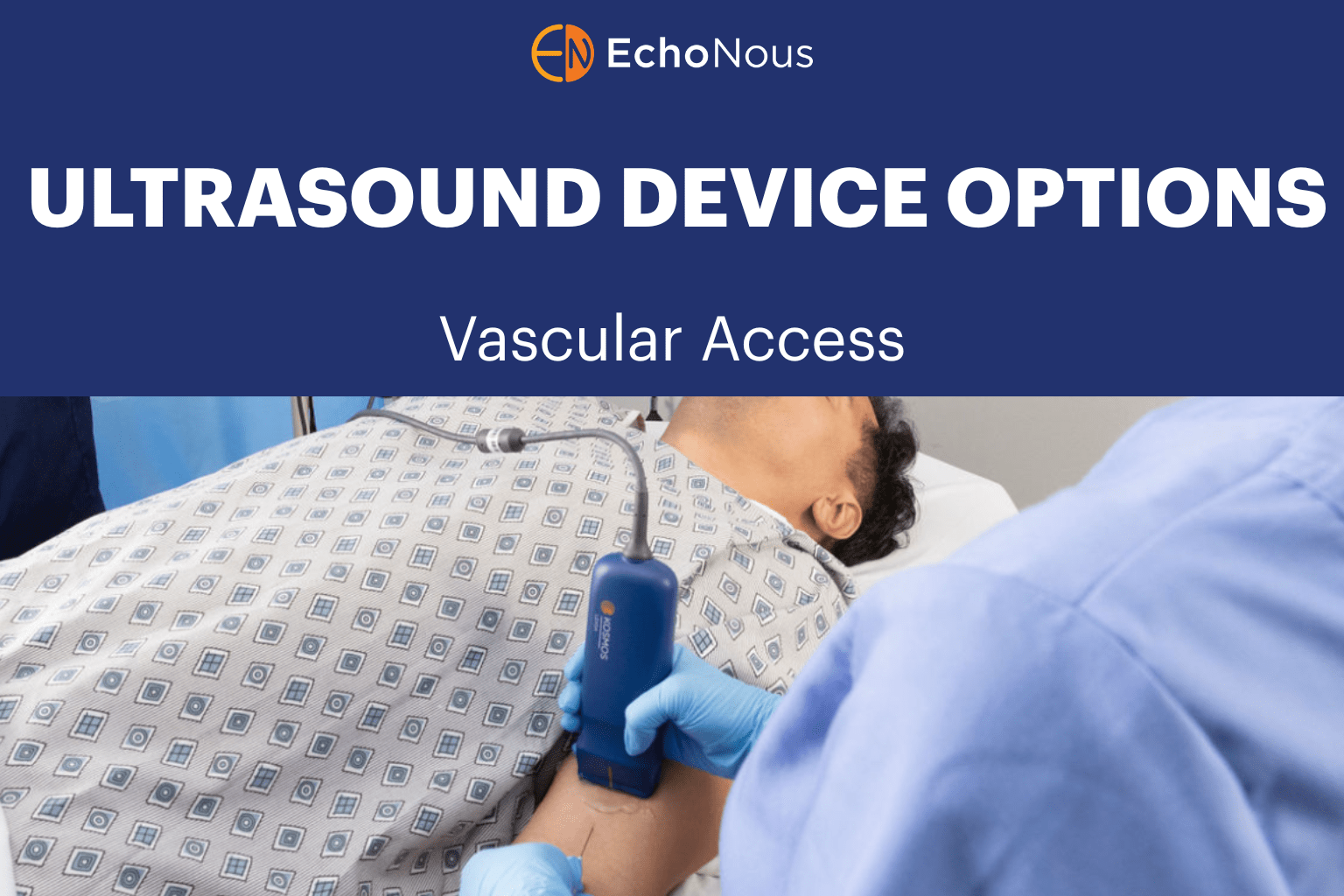3 Harsh Realities About Point-of-Care Ultrasound (POCUS)
Point-of-care ultrasound (POCUS) has quickly become one of the most innovative diagnostic tools available to hospitalists. Over the last decade, POCUS has been embraced in many medical specialties due to its ability to deliver real-time bedside imaging, allowing rapid decision-making and improved patient outcomes[1].
For hospitalists who work in fast-paced environments managing acutely ill patients, POCUS can be a game-changer[2]. Despite its many advantages, integrating POCUS is not without challenges and limitations.
In the rush to adopt this tool, some of the complexities and difficulties associated with POCUS may be underappreciated. Equipment costs, new learning curves, and the limitations of basic devices all pose significant hurdles for hospitals looking to equip their teams with ultrasound technology[1,3].
Understanding these realities is crucial for hospitalists looking to adopt POCUS into their daily practice practically and effectively.
In this article, we’ll explore three realities hospitalists must consider when integrating POCUS into their practice, and look at how EchoNous offers innovative solutions to these challenges.
Table of contents
1. Cart-based Ultrasound Machines Can Be Wildly Expensive and May Lack Warranties or Support
A Strain on Hospital Budgets
The initial cost of acquiring an ultrasound cart is a significant barrier to widespread adoption in hospitals. While ultrasound technology has become more portable and affordable in recent years, the cost of high-quality machines that meet the diagnostic standards of hospitalists remains substantial.
Financial Barriers to Adoption
Traditional ultrasound machines are expensive, with high-end models costing anywhere between $70,000 to $200,000+. This upfront cost can be a financial strain for many hospitals, especially smaller or rural institutions. Beyond the initial purchase, hospitals must also account for ongoing costs, including repairs, maintenance, and software updates. In many cases, these expenses deter hospitals from investing in enough machines to meet the demands of their patients and staff.
EchoNous’ Cost-Effective Alternative: An Affordable and High-Quality Solution
EchoNous can address the financial challenge with Kosmos Plus, a portable ultrasound solution that provides the often coveted “cart-based performance” at a fraction of cost.
Kosmos Plus allows hospitals to equip multiple units across departments, without the financial burden associated with traditional systems. Hospitals can now place affordable, high-quality ultrasound units in key areas, ensuring that hospitalists have access when they need it most.
This affordability means that hospital departments can place ultrasound units on every floor or unit, rather than having to share one or two machines across multiple areas.
Because we all know what it’s like to try to hunt down the ultrasound cart, only to realize it’s 2 floors away, and you can’t leave to go get it.
What sets Kosmos apart is not just its affordability but also its 5-year warranty and exceptional customer support, which provide hospitals with peace of mind when investing in this technology.
With a comprehensive warranty in place, hospitals are protected from unforeseen repair or replacement costs, making it a financially sustainable option in the long term.
Looking for an affordable, high-quality ultrasound solution? Discover EchoNous Kosmos Plus for your hospital.
2. The POCUS Learning Curve
While the basics of ultrasound are simple enough to grasp, becoming truly proficient in a clinical setting requires training and practice. As with any new skill, there is a learning curve to work through.
Challenges in Training and Proficiency
Learning to operate ultrasound machines effectively, interpret the images accurately, and apply the findings to clinical decisions requires extensive training[4].
The reality for many hospitalists is there’s limited time for learning, sometimes no access to experienced mentors, and a lack of patient cases to practice on. Without adequate training, even seasoned practitioners are hesitant to learn a new skillset.
EchoNous’ AI-Assisted Workflows: Simplifying the Learning Curve
To address training challenges, the Kosmos integrates AI-driven features that may simplify the learning process for hospitalists. Advanced AI capabilities, like Auto Doppler, automatically place the sample gate in certain cardiac scans, reducing the steepness of the learning curve and enabling hospitalists to become proficient more quickly.
This is especially important in today’s healthcare landscape, where workforce shortages and time constraints make lengthy training programs impractical.
With AI assistance, new hospitalists can onboard more efficiently, allowing them to confidently use ultrasound in their daily practice. This is particularly valuable in hospitals with staff shortages, where quick and effective onboarding is essential to maintaining patient care standards.
Want to make the learning curve for POCUS easier? Explore AI-driven solutions with EchoNous.
3. The Limitations of Low-Cost Ultrasound
Poor Image Quality and Diagnostic Limitations
There’s nothing more defeating than having to tell your patient, who is right there with you, that you can’t visualize much of anything because the image quality is lacking.
In an effort to reduce costs, some hospitals may opt for low-end ultrasound devices. These machines often come with limited functionality, offering only one probe and basic image quality.
This can limit the ability of hospitalists to make confident medical decisions based on the images, particularly when dealing with complex cases. Low quality images can lead to diagnostic uncertainty, requiring additional tests or more advanced imaging, which undercuts the benefits of POCUS.
EchoNous’ Versatility and High-Quality Imaging
EchoNous solves these limitations with the Kosmos Plus, which delivers high-quality imaging applicable to a broad range of medical specialties, including cardiology, emergency medicine, and critical care.
Unlike low-cost alternatives, Kosmos Plus provides superior image clarity, ensuring that hospitalists can make accurate, real-time diagnoses without the need for additional imaging tests.
Moreover, the device is versatile enough to be used in multiple diagnostic settings, from assessing the heart and lungs to evaluating abdominal pathologies. This broad applicability makes Kosmos Plus a one-stop solution for hospitals, reducing the need for multiple specialized ultrasound devices.
By investing in a versatile, high-quality device like Kosmos Plus, hospitals avoid the pitfalls of low-cost ultrasound units while ensuring that their hospitalists are equipped with reliable diagnostic-grade tools.
Overcoming POCUS Hurdles with EchoNous
The adoption of POCUS in hospitals is not without challenges. High costs, a steep learning curve, and the limitations of low-budget devices are all significant barriers that hospitalists and administrators must consider.
However, with Kosmos Plus, these barriers can be addressed effectively. Its affordable price, AI-driven features, and broad diagnostic capabilities make it an ideal solution for hospitalists looking to expand their POCUS capabilities without sacrificing quality or efficiency.
Hospitals that invest in EchoNous’ technology can ensure that their staff have the tools necessary to provide accurate, real-time diagnostics, ultimately improving patient outcomes while managing costs effectively.
Citations
1. Hashim, A., Tahir, M. J., Ullah, I., Asghar, M. S., Siddiqi, H., & Yousaf, Z. (2021). The utility of point of care ultrasonography (POCUS). Annals of Medicine and Surgery, 71, 102982.
2. Soni, N. J., Schnobrich, D., Mathews, B. K., Tierney, D. M., Jensen, T. P., Dancel, R., Cho, J., Dversdal, R. K., Mints, G., Bhagra, A., Reierson, K., Kurian, L. M., Liu, G. Y., Candotti, C., Boesch, B., LoPresti, C. M., Lenchus, J., Wong, T., Johnson, G., … Lucas, B. P. (2019). Point-of-Care Ultrasound for Hospitalists: A Position Statement of the Society of Hospital Medicine. Journal of Hospital Medicine, 14, E1–E6.
3. Becker, D., Tafoya, C., Becker, S. L., Kruger, G., Tafoya, M., & Becker, T. (2015). The use of portable ultrasound devices in low- and middle-income countries: A systematic review of the literature. Tropical Medicine & International Health : TM & IH, 21.
4. Shah, S., Bellows, B. A., Adedipe, A. A., Totten, J. E., Backlund, B. H., & Sajed, D. (2015). Perceived barriers in the use of ultrasound in developing countries. Critical Ultrasound Journal, 7, 11.



